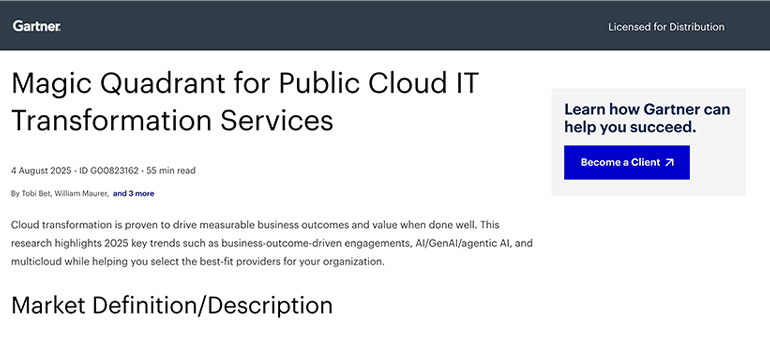Article Why Azure Virtual Machines Offer the Best Path Forward

By Insight UK / 29 Apr 2019 / Topics: Cloud
Over the past decade, cloud has transitioned from an experimental technology into a fixture of the IT world. Organisations no longer have conversations about whether they should adopt cloud, but how many workloads they should migrate and at what pace.
The advantages are numerous. The cloud offers greater cost efficiencies, flexibility and innovation when compared to on-premise infrastructure, while a new breed of applications is enabling Digital Transformation – a trend which is driving productivity and opening new revenue streams.
There are also plenty of reasons why some businesses haven’t made the jump or are doing so gradually. Some might still harbour concerns about cost, complexity and control, while others need to maximise existing on-premise investments.
As one of the leading public cloud vendors, Microsoft Azure can ease all of these fears and unlock huge opportunities for your organisation. And with end of support for Windows Server 2008 and SQL Server 2008 looming, there has never been a better time to upgrade.
The time to act is now
Extended support for SQL Server 2008 and 2008 R2 ends on July 9, 2019, while updates for Windows Server 2008 and 2008 R2 will cease on January 14, 2020. It’s difficult to overstate the importance of having a plan in place for the solutions that are affected by this change.
You will be exposing your organisation to security threats and compliance issues, not to mention the fact you will be missing out on innovation opportunities. You can of course upgrade to a newer version of the affected solutions, but it’s a perfect opportunity to move to the cloud with Azure.
Azure Virtual Machines (VMs) can be used to host your applications in the cloud and can act as an extended data centre, with VMs connecting easily to your organisation’s network. There’s no need to purchase and maintain the hardware hosting these instances, and you can scale up or down depending on your organisation’s needs.
Driving innovation
The lack of up-front investment makes the cloud a more cost-effective way of running your IT environment, while also opening up a world of innovation. Security, compliance and feature updates are automatically applied to reduce the burden on your IT department.
The Azure platform is constantly evolving. A new service called Windows Virtual Desktop has just gone into preview, helping organisations move away from Windows 7. Windows Virtual Desktop is easier to deploy than traditional desktop virtualisation solutions because it’s hosted on Azure. This makes it scalable and means you no longer have to host, install and manage components yourself.
Windows Virtual Desktop gives you the choice between virtualising entire applications or desktops and is the only service to enable a multi-user experience for Windows 10.
Reduced complexity
Moving to the cloud is easier and less disruptive than you might think.
Affected SQL Server and Windows Server workloads can be rehosted on Microsoft Azure with no changes to code, while you can re-use existing licences. Meanwhile, reserved instances allow you to commit to usage over a longer period of time for more predictable workloads and greater discounts.
To give you some time to complete the migration, Microsoft will offer three years of extended security updates for the affected versions at no additional charge.
While the cloud is the most effective migratory path, we recognise that some workloads can’t be taken off-premise for security or compliance reasons. On-premise workloads will need to be upgraded to SQL Server 2017 and Windows Server 2016 and can run in parallel with Azure deployments as part of a hybrid strategy.
Help is at hand
It’s possible to do the heavy lifting yourself, but Insight can make life easier. As a trusted Microsoft partner, we can take a look at your existing environment to identify affected workloads and offer recommendations on how to best migrate.
Our team of experts will advise the best course of action depending on your business needs, workloads and technologies. After deployment we’ll make sure your optimised technically and financially and we have a range of managed services for round-the-clock-support.
Watch the webinar: Microsoft Azure Virtual Machines



